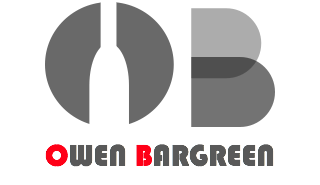Originally starting with the famed Boeing Wine Club, Benjamin Smith began learning more about wine through making his own beer and wine more than 20 years ago. Together with his wife Gaye McNutt, Ben produces some outstanding red wines from the Red Mountain AVA for their Cadence Winery, located in Seattle. Ben and Gaye also both own their own vineyard in Red Mountain, the Cara Mia Vineyard. Cadence has gained a nationwide reputation for crafting a sterling minerality in all their wines —regardless of vintage. I found their last releases, largely from the warm 2014 vintage, to be really outstanding across the board. These wines evoke a Bordealise feel while maintaining the classic Washington red and dark fruit profiles. I recently had the chance to sit down with Ben and chat wine. Highly knowledgable, Ben has now been in the Washington wine industry for more than 20 years. I think you are going to really enjoy hearing his story in wine. Here is my interview with Benjamin Smith, Owner and Winemaker of Cadence.
WWB: How did you first become interested in wine and winemaking?
BS: I moved to Seattle from Columbus, Ohio in 1986. There wasn’t much in the way of wine culture at that time, though honestly I wouldn’t have noticed anyway being a poor college kid. However, Seattle was different – it already cared about fresh, local, handmade and artisanal crafted products. I took notice, started drinking the locally produced beers (they were good!) and eating the food (it wasn’t from a can!) Then I began brewing beer, which segued into my first grape harvest – a 1992 Cabernet/Merlot blend from Dick Boushey’s vineyard – and then it was off to the races. I joined the Boeing Winemaking Club, became its head of grape procurement, won the competition three times in a row, the last time in 1997. In 1998 my wife and I founded Cadence.
WWB: I have enjoyed your signature style of mineral-driven, Bordelaise type winemaking for many years. Can you talk about how you have crafted this Bordelaise style at Cadence?
BS: Our goal has always been to produce wine that shows a sense of place, hence vineyard designation. A key, though, is that I believe that the riper wine becomes (after a point) the less it reflects its site. In other words, riper and riper leads to similarities of flavors between sites, and ultimately between grape varieties, that obscure where the fruit comes from. This line of thought directs me to pick at lower potential alcohol levels than do many of my peers, and leads to wines that are brighter in acidity, more compact in style, and carry flavor components that have been baked out of riper wine (like the minerality to which you refer). In short, my wines are more Bordelaise than many, as a direct result of how we wish to show off the vineyard.
WWB: Your 2014 releases were outstanding across the board. Can you talk about the challenges with making wine and maintaining your style of winemaking in the warm 2014 vintage and the 2015 vintage that saw severe heat spikes?
BS: Yes, they were very challenging vintages! Growing Degree Days (GDD) is a measure of the heat accumulated throughout the growing season, and an easy way to characterize the vintage. On Red Mountain the average heat accumulation is about 2900 heat units (GDD). 2014 ended up around 3200 GDD and 2015 topped 3700! So yes, those years were extremely hot. Another way to look at the growing season is the number of days between flowering and harvest. 2014 started cold but warmed dramatically. We probably lost ten days between flowering and harvest compared to normal years. 2015, on the other hand, started warm, so budbreak and flowering were early. Harvest was early too, but overall the season was closer to a normal length than in 2014. This goes a little way to explaining the tougher tannins in 2014 versus 2015, and also the brightness that 2015 carried into bottle that belies the heat of the vintage. Data and comparisons aside, I just pick when the fruit tastes ripe and ferment according to gut instinct tempered with data.
WWB: When you are not enjoying Cadence wines, what are some of your favorite wines of Washington and wines of the world?
BS: We just opened a vertical of Andrew Will Sorella (his flagship Bordeaux blend) back to its first vintage, 1994. The tasting was divine, even the oldest wines were lively and pure. Chris Camarda is definitely a hero of mine! Outside of Washington we gravitate to Piedmont, Italy because of Barbaresco and Barolo. These regions combine beautiful fruit, bright acidity and enormous tannins to make incredibly age-worthy wine meant to be paired with the wonderful cuisine of the region. Nebbiolo also profoundly reflects its site, another plus.

